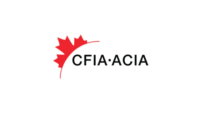Control of Salmonella, Campylobacter and Other Bacteria in Raw Poultry

The USDA’s Food Safety and Inspection Service (FSIS), Office of Public Health Science, Microbiology Division just released a document entitled, “The Nationwide Microbiological Baseline Data Collection Program: Young Chicken Survey.” The program, which sampled thousands of chicken carcasses between July 2007 and June 2008, was designed and performed by the FSIS to estimate the percentage of positive findings and the level of microbiological pathogens and indicator bacteria on raw chicken carcasses. This article details the findings of the study.
Methods and Findings
From July 2007 to June 2008, 6,550 broiler chicken carcass rinsate samples were collected at 182 establishments that slaughtered young chickens and produced whole carcasses under federal inspection. Samples were taken at two different locations within the plant—rehang, which is just after the picking system and is in the front end of the plant, and post-chill, which is where carcasses are considered fully processed and where FSIS inspectors usually collect carcasses for sampling—and collected from two different shifts.
 Carcass rinse samples were evaluated to estimate the percent positive rate and levels of Salmonella, Campylobacter, generic Escherichia coli, aerobic plate count (APC), Enterobacteriaceae and total coliforms. The presence and number of these bacteria were compared to determine whether significant differences existed between samples taken at rehang and post-chill during the separate shifts. Salmonella is a Gram-negative rod with flagella that easily colonizes in live chickens (Photo 1). The prevalence of Salmonella has gone up and down over the years since the inception of the Salmonella performance standard that was implemented in 1996 (Figure 1). Figures 2 and 3 show the data obtained for Salmonella prevalence and numbers on carcasses published in the FSIS document.
Carcass rinse samples were evaluated to estimate the percent positive rate and levels of Salmonella, Campylobacter, generic Escherichia coli, aerobic plate count (APC), Enterobacteriaceae and total coliforms. The presence and number of these bacteria were compared to determine whether significant differences existed between samples taken at rehang and post-chill during the separate shifts. Salmonella is a Gram-negative rod with flagella that easily colonizes in live chickens (Photo 1). The prevalence of Salmonella has gone up and down over the years since the inception of the Salmonella performance standard that was implemented in 1996 (Figure 1). Figures 2 and 3 show the data obtained for Salmonella prevalence and numbers on carcasses published in the FSIS document.

These data demonstrate that the poultry industry is doing an exceptional job of reducing Salmonella prevalence and number on carcasses during processing. Forty percent of chickens coming into these facilities had some Salmonella cells on them. After processing, only 5.19% had any Salmonella. Of the 5% that remained positive, an average of only 0.70 cells/mL of rinse were recovered. Since 2005, the industry has reduced Salmonella prevalence nationwide from 17.9% to 5% as of 2009.
 Campylobacter is a spiral-shaped bacterium that can cause disease in both humans and animals. Most human illness is caused by Campylobacter jejuni, but human illness can also be caused by other species. C. jejuni grows best at the body temperature of a bird and is well adapted to birds, which carry it without becoming ill. This organism is responsible for numerous foodborne infections each year (Photo 2). Figures 4 and 5 show the data obtained for Campylobacter prevalence and numbers on carcasses.
Campylobacter is a spiral-shaped bacterium that can cause disease in both humans and animals. Most human illness is caused by Campylobacter jejuni, but human illness can also be caused by other species. C. jejuni grows best at the body temperature of a bird and is well adapted to birds, which carry it without becoming ill. This organism is responsible for numerous foodborne infections each year (Photo 2). Figures 4 and 5 show the data obtained for Campylobacter prevalence and numbers on carcasses.
.jpg)
As with Salmonella, the U.S. poultry industry is reducing Campylobacter prevalence and number on carcasses during processing. Seventy-one percent of chickens coming into these facilities had some Campylobacter cells on them. After processing, only 10.66% had any Campylobacter cells. Of the 10.66% that remained positive, an average of only 67 cells/mL of rinse was recovered.
Figures 6 through 9 show the data obtained for APCs, Enterobacteriaceae counts, total coliform counts and E. coli counts on carcasses. These data show that APCs were reduced by 1.70 logs (> 90%), Enterobacteriaceae were reduced by 2.20 logs (> 99%), total coliforms were reduced by 1.59 logs (> 90%), and E. coli were reduced by 1.74 logs (> 90%) on carcasses as they traversed the processing plant.
Summary
No matter which parameter is considered (pathogenic bacterial prevalence or number, or indicator bacterial numbers), this study by the FSIS clearly shows that poultry plants across the U.S. are utilizing interventions that are effective for significantly reducing bacterial populations on carcasses. When results from rehang and post-chill were compared, a reduction in the percentage positive rate was observed for both Salmonella (rehang – 40.70%, post-chill – 5.19%, at P value < 0.05, P = 0.00) and Campylobacter (rehang – 71.36%, post-chill – 10.66% at P value < 0.05, P = 0.00). The researchers also found that the Salmonella serotypes isolated most often from the young chicken samples during this survey were Kentucky, Heidelberg, Typhimurium and Typhimurium (Copenhagen), and these findings were consistent regardless of shift or whether the sample was obtained at rehang or post-chill.
Scott M. Russell, Ph.D., is Professor of Poultry Products and Processing Microbiology in the Poultry Science Department at the University of Georgia, Athens, GA 30602-2772 and is a member of the Food Safety Magazine editorial advisory board. He can be reached at srussell@uga.edu.
Looking for a reprint of this article?
From high-res PDFs to custom plaques, order your copy today!






.webp?t=1721343192)

